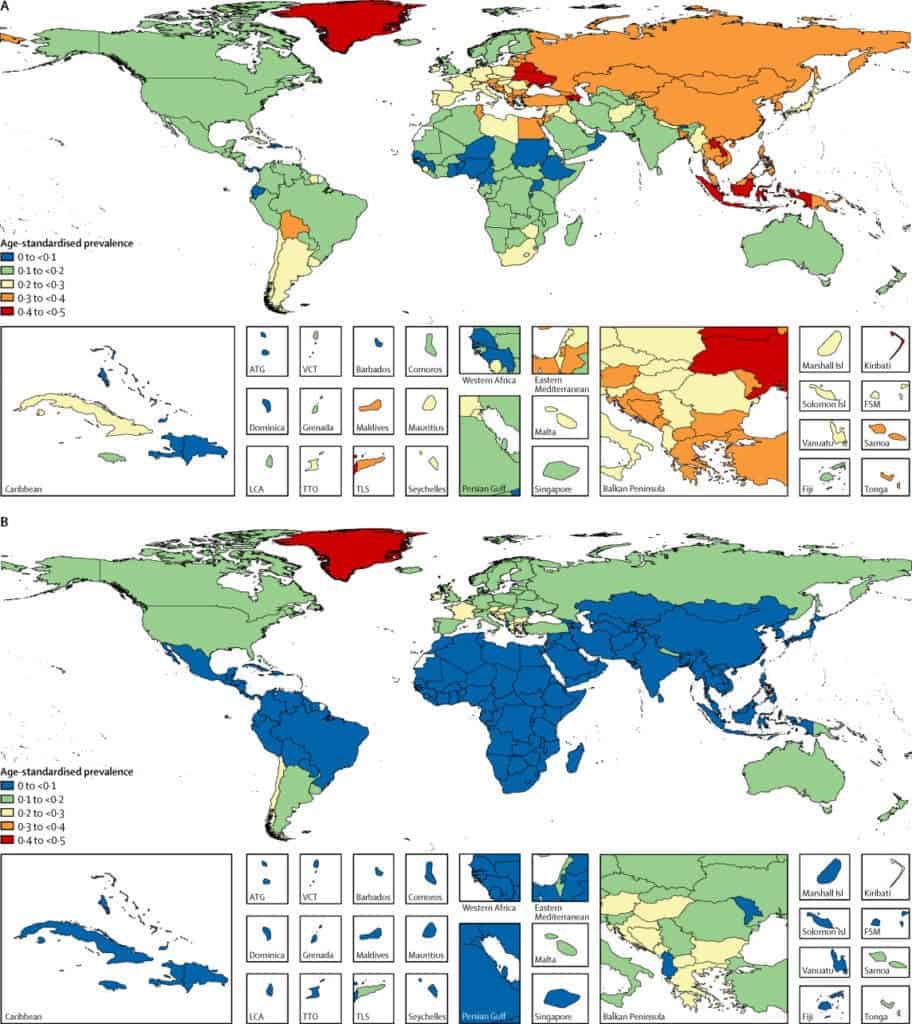In many places like the United States or the European Union, the percentage of people who smoke has dropped significantly in the last 25 years. However, because the global population has risen dramatically to over seven billion people, in absolute numbers, there are now more smokers than ever — nearly a billion people, according to a new study published in The Lancet.
For their study, researchers at the Institute for Health Metrics and Evaluation at the University of Washington looked at public data on smokers from 195 countries and territories between 1990 and 2015. During this time frame, the world’s population rose from 5.3 billion in 1990 to 7.2 billion in 2015.
Overall, the percentage of people who smoke has come down since 25 years ago. Only four countries had significant yearly increases in smoking prevalence between 2005 and 2015: Congo and Azerbaijan for men and Kuwait and Timor-Leste for women. Overall, 933 million people smoked every day in 2015.
The vast majority, some 80 percent, are men. Effectively, one in four men in the world smoked every day in 2015 compared to only one in twenty women. That’s not to say there hasn’t been any progress — far from it. Smoking rates in men dropped from 35 percent in 1990 to 25 percent in 2015 while for women the smoking rates dropped from 8 percent to 5 percent from 1990 to 2015, respectively.
The distribution of smokers on a country by country basis varies worldwide. More than half of the world’s male smokers live in only three countries. China had 254 million male smokers, India had 91 million and Indonesia 50 million. The highest smoking rate among men, however, was seen in the small Pacific island state of Kiribati where one in two men smokes on a daily basis.

Age-standardised prevalence of daily smoking for men (A) and women (B), in 2015. Credit: The Lancet.
You might be surprised to hear that the country with the most female smokers in 2015 was the United States with 17 million smokers, followed by China with 14 million and India with 13.5 million smokers. Altogether, these three countries accounted for a quarter of all female smokers worldwide.
Among adolescents, smoking prevalence dropped significantly for each sex group from 16.1% to 10.6% for men and from 4.8% to 3% for women. The biggest drop for this age group since 2005 was seen in New Zealand, Iceland, and the USA.
The researchers say that more than one in ten deaths were due to smoking in 2015. Half of all these preventable deaths occurred in China, India, the U.S., and Russia. These 6.4 million deaths which were attributed to smoking represent a 4.7% increase since 2005. In other words, despite our best efforts, more people are dying from smoking than ever.
“Greater success in tobacco control is possible but requires effective, comprehensive, and adequately implemented and enforced policies, which might in turn require global and national levels of political commitment beyond what has been achieved during the past 25 years,” the researchers conclude.










